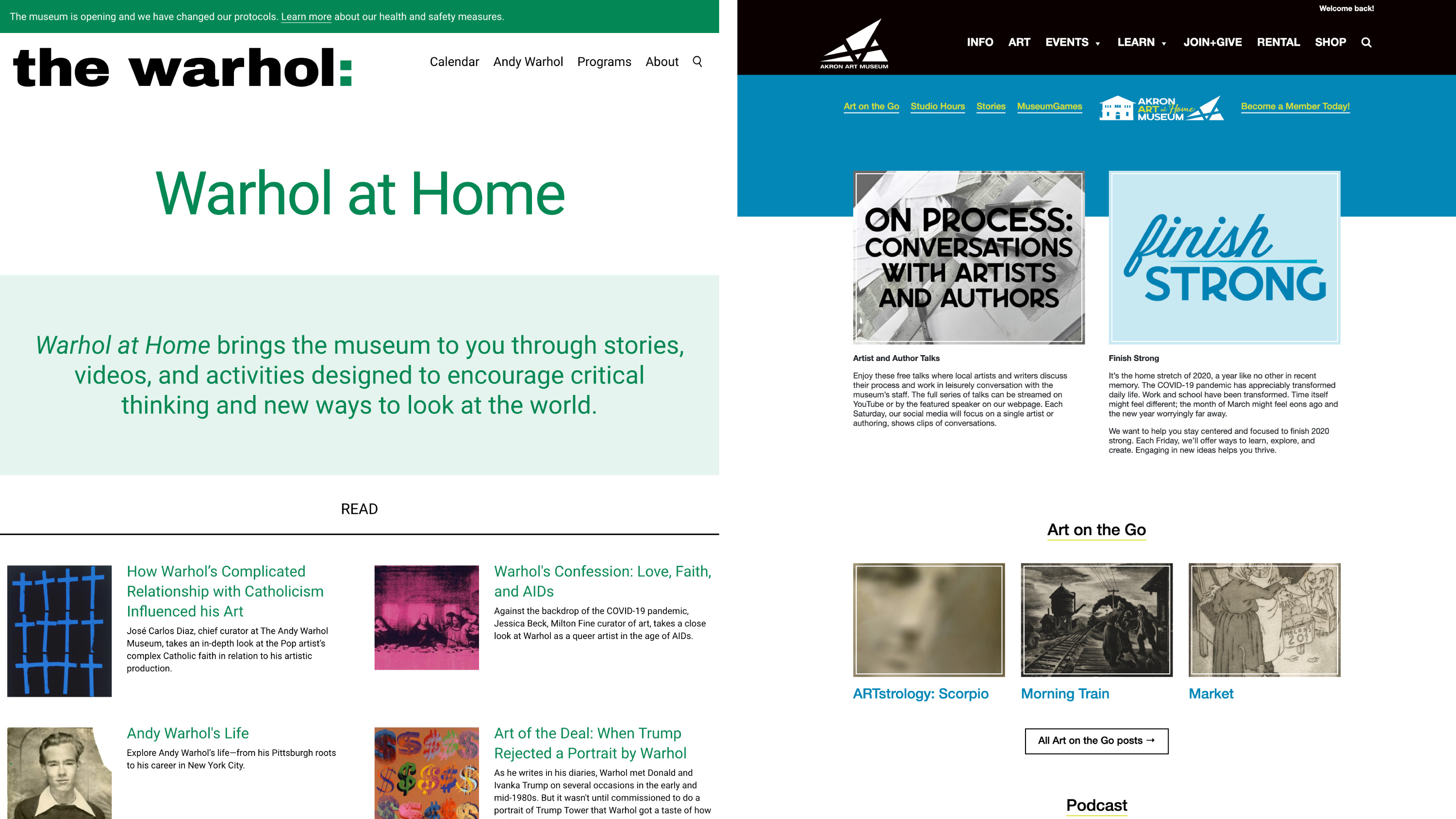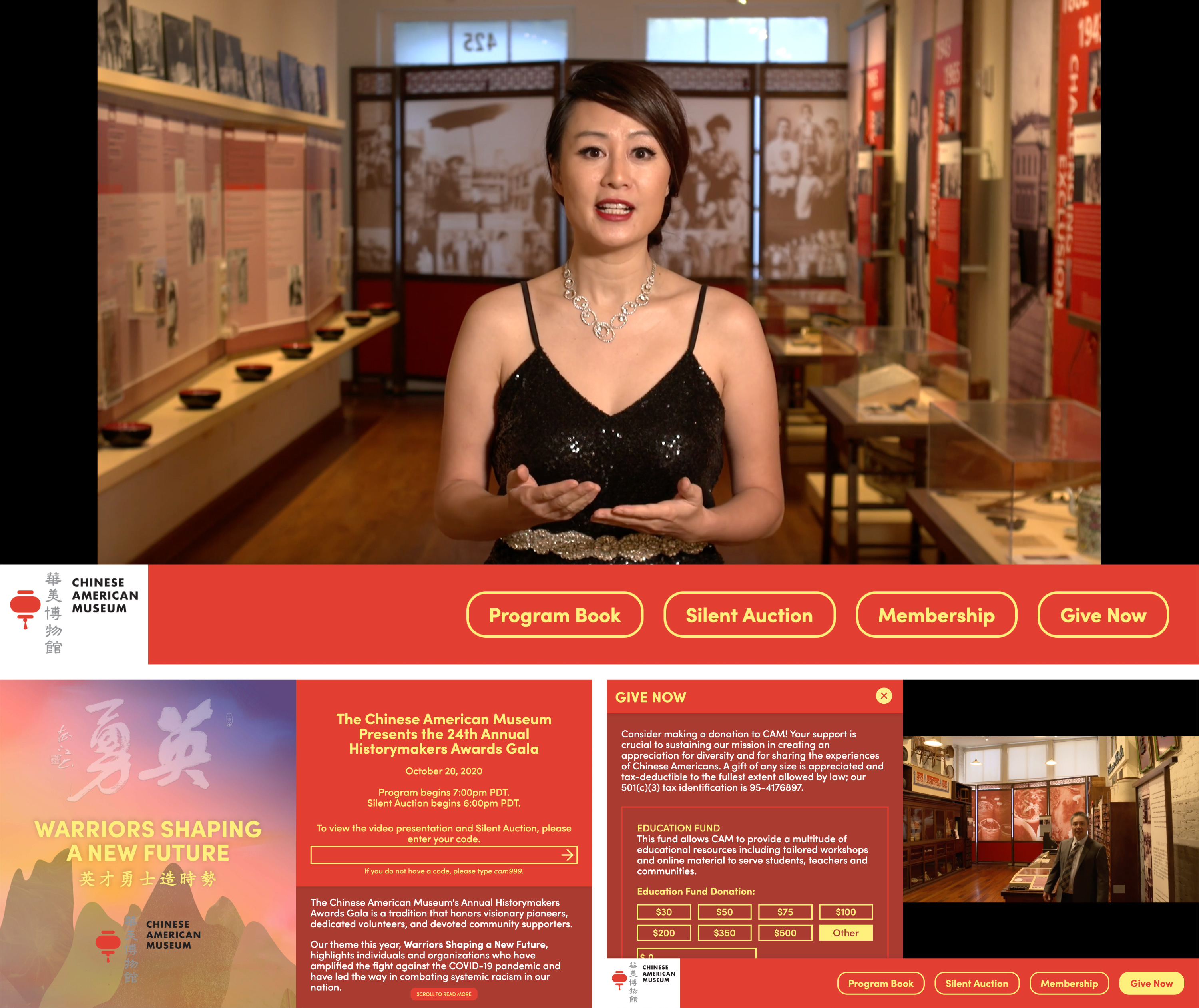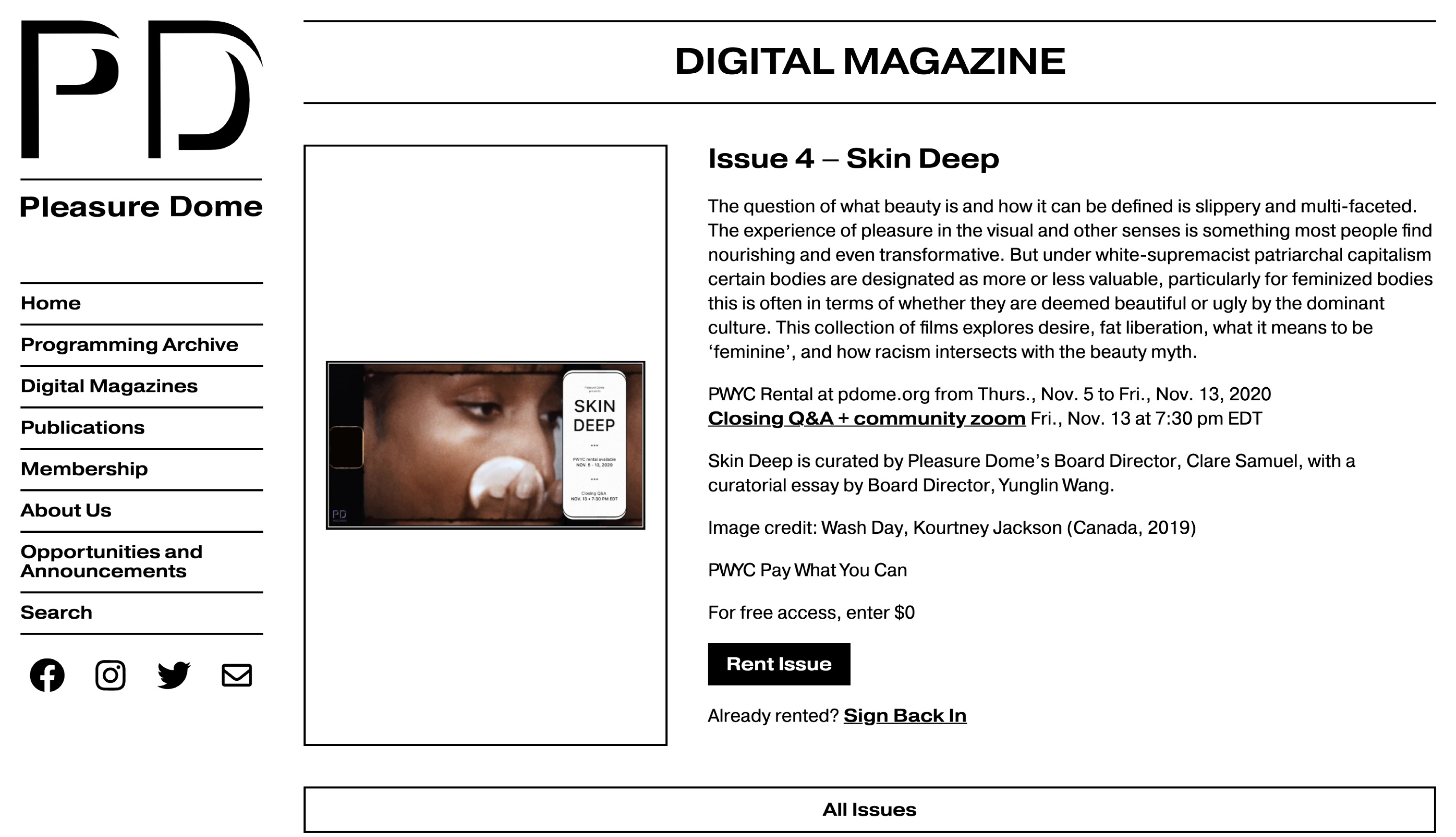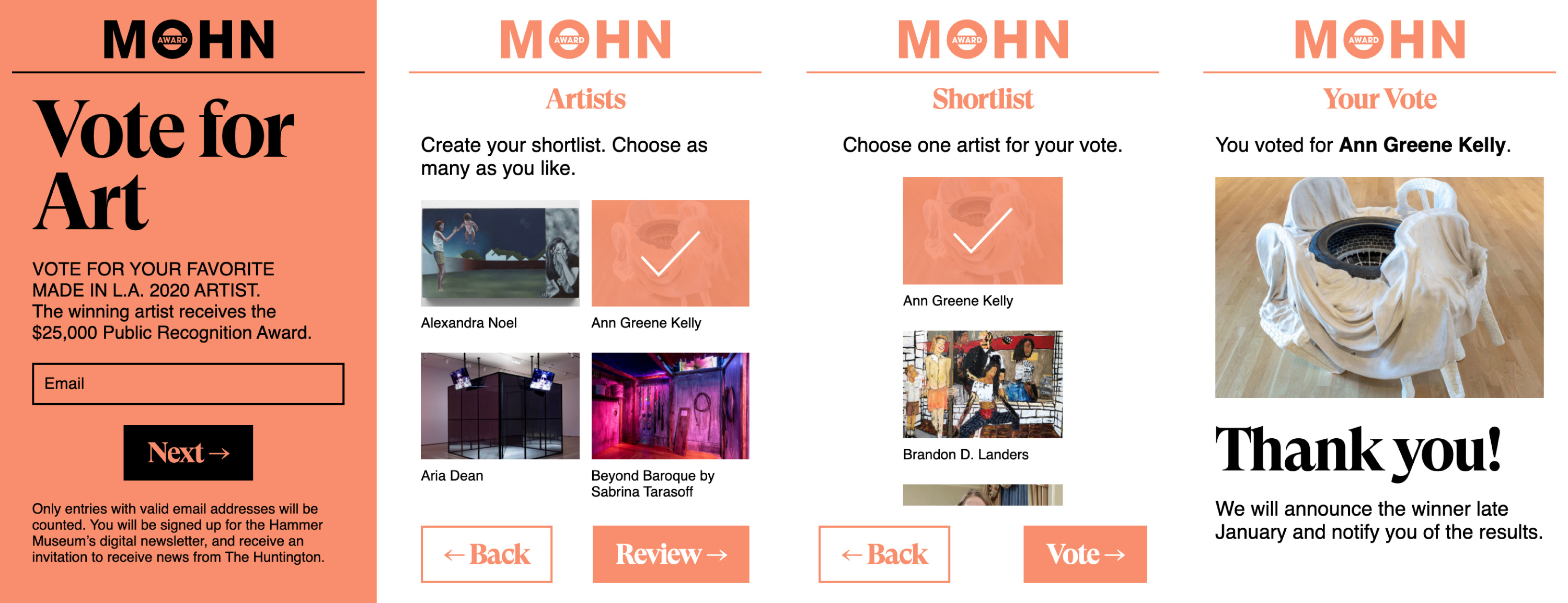Helping Cultural Institutions Adapt to COVID-19 — Recent Work
The pandemic of 2020 presented an unprecedented challenge for cultural institutions. We’ve been with with our clients every step of the way, creating projects that run the gamut of adaptations undertaken by the industry. We built “At Home” sections, designed and developed virtual events, and made a bring-your-own-device web app. Additionally, we led a cross-institutional survey to gain a unique insight into museum websites’ changing roles.
Cross-institutional Survey of the Effects of Shelter-in-place on Museum Website Visitation
As soon as authorities in the United States began announcing shelter-in-place orders, we recognized the importance of documenting museums’ responses to the pandemic. Drawing on our experience running the National Museum Website Visitor Motivation Survey, we acted quickly to spin-up a COVID-19 study.

Institutions participating in the COVID-19 survey
Our widely-cast call-for-participants led twenty institutions to sign-on. We collected quantitative data from Google Analytics and conducted qualitative interviews. By analyzing this data, we have gained insight into how visitor behavior has changed and how museums have responded.
We are now sharing our findings with participants and at industry conferences. Read about our presentation at MCN 2020.
“At Home” Sections
Museums strove to maintain bonds with their communities, even as they closed their doors. To provide educational resources and entertainment to those stuck at home, many museums created “at-home” sections that acted as hubs for digital content. We were hands-on in developing these features for the Andy Warhol Museum and Akron Art Museum.

Left: The Andy Warhol Museum. Right: The Akron Art Museum.
We created the Warhol’s solution by leveraging patterns and templates we had previously established through our recent redesign. Working with Museum staff, we reinvigorated what had formerly been the blog. We created assets that can live-on post-COVID, should the Museum’s strategy call for continued focus on digital publishing.
For the Akron Art Museum, we created a new, versatile set of templates. These assets allowed the Museum to move their digital content off Medium and onto their domain. We also upgraded the platform — migrating website hosting to WP Engine and code to Github — while giving museum staff greater ownership of their property.
Virtual Events
Another way cultural institutions adapted was to take their events virtual. We worked with the Chinese American Museum and Pleasure Dome, an experimental film exhibition collective, to reimagine signature programming for an online format.

The Chinese American Museum’s Historymakers 2020 virtual gala
The Historymakers Gala is an important annual event for CAM, both in terms of the Museum’s financial health and community cohesion. Though the traditional black-tie dinner off the table, the organizing committee was adamant that the virtual event must convey the same sense of occasion and sophistication. Our solution allowed guests to make donations and participate in a silent auction while enjoying a live-streamed awards presentation. The presentation was a hit with guests. The Museum was happy to announce that the event achieved its financial stretch targets.

Pleasure Dome’s Digital Magazine
Pleasure Dome has presented the best new experimental film and video for over thirty years, and they weren’t about to stop because of a pandemic. Our solution was to reimagine their programming season as a “digital magazine.” Each issue substitutes for a screening, anchored by a feature presentation (often a collection of shorts), followed by a live Q&A (on Zoom) and accompanied by curatorial text. Out of respect for licensing and artist fees, each issue’s feature is available for a bracketed amount of time, within which guests can “rent” access.
Besides adding the digital magazine functionality, we refreshed the website’s design, migrated the hosting to WP Engine, and upgraded their online membership and publication order forms.
Bring-Your-Own-Device
Following a period of closure, some institutions reopened with safety precautions in place. One component of this was the reconsideration of in-gallery interactive touch-screen presentations.

Hammer Museum’s Mohn Award
Each year, as part of its Made In LA exhibition, the Hammer Museum administers the Mohn Award. A popular vote determines the winner. In the past, visitors to the show could log their choices via in-gallery iPad kiosks. This year the exhibition is staged at both the Hammer and the Huntington Library. We needed to make the experience as safe as possible. Our solution was to redesign and rebuild the web app for a “bring-your-own-device” model. Guests who use their phones to log in to the Museum’s wi-fi can access a dedicated microsite and make their voices heard.
In addition…
- We redesigned and redeveloped the website and graphic identity of the Institute for Learning Innovation.
- We set up Google Tag Manager for the Terra Foundation for American Art.
- We brought WordPress up-to-date for the Houston Center for Contemporary Craft and migrated their hosting to WP Engine.
- We added features to the architecture journal Common Edge in collaboration with Once Future.
- And we continued our longstanding collaboration with Everything Type Company. This season’s work included development with the Google Drive API and the Hubspot CMS.
Heartfelt thanks to team-members Zack Rothauser and Grace Poole for their outstanding contributions this year.
Want to work together? Please reach out via email — marty@spellerberg.org
Posted November 2020